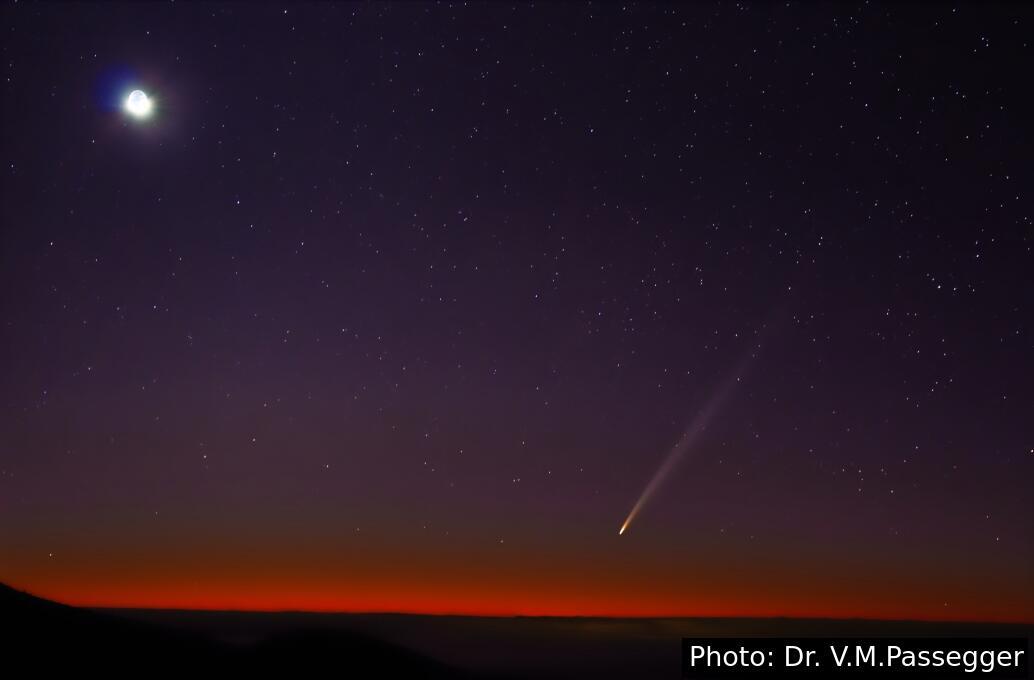The brightest comet in the Northern Hemisphere since Hale-Bopp in 1997 is currently visible from Hawai`i. C/2023 A3 (Tsuchinshan–ATLAS) is a comet from the Oort cloud discovered by astronomers at the Tsuchinshan (Purple Mountain) Observatory in China on January 9, 2023, and was independently found by the Asteroid Terrestrial-impact Last Alert System (ATLAS) telescope in South Africa on February 22, 2023. Measurements of its orbit suggest that the comet will not return to the inner solar system for approximately 80,000 years, making this a once-in-a-lifetime opportunity for observation.
The closest approach to the sun, the perihelion, was on September 27, 2024, when it became visible to the naked eye in the eastern sky before sunrise. Dr. Vera Maria Passegger, a support astronomer at Subaru Telescope, took photos of Tsuchinshan–ATLAS around 5 AM on September 29 from Halepohaku, the mid-level of Maunakea, and October 2 from the summit area of Maunakea. Dr. Passegger says, “It is amazing how long the comet's tail is, it stretches more than 10 degrees across the sky, which is the size of 20 full moons.”
Tsuchinshan–ATLAS will get closest to Earth on October 12. From October 9, it will be visible after sunset in the west. It is expected that the comet will get as bright as Regulus during this time, the brightest star in the constellation Leo, before fading continuously towards the end of October and then disappearing.

Figure 1: Comet Tsuchinshan-ATLAS and the waning moon crescent seen from Halepohaku about one hour before sunrise on September 29, 2024. (Canon EOS 600D, 40mm, f/5.0, 180s, ISO 3200) (Credit: Dr. Vera Maria Passegger/NAOJ)
Figure 2: The comet is rising behind Maunakea observatories about 45 minutes before sunrise on October 2, 2024. Observatories from left to right: NASA Infrared Telescope Facility (IRTF), Canada France Hawaii Telescope (CFHT), Gemini North telescope, University of Hawaii 2.2-meter telescope, and United Kingdom Infrared Telescope (UKIRT). (Canon EOS 600D, 18mm, f/3.5, 40s, ISO 800) (Credit: Dr. Vera Maria Passegger/NAOJ)


